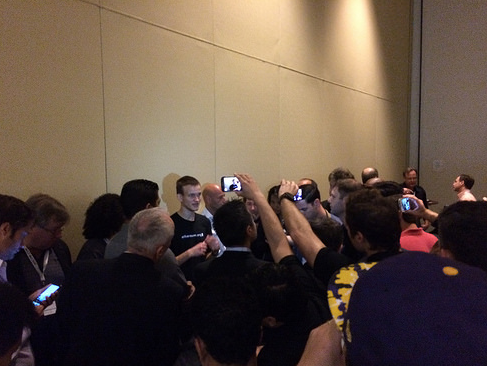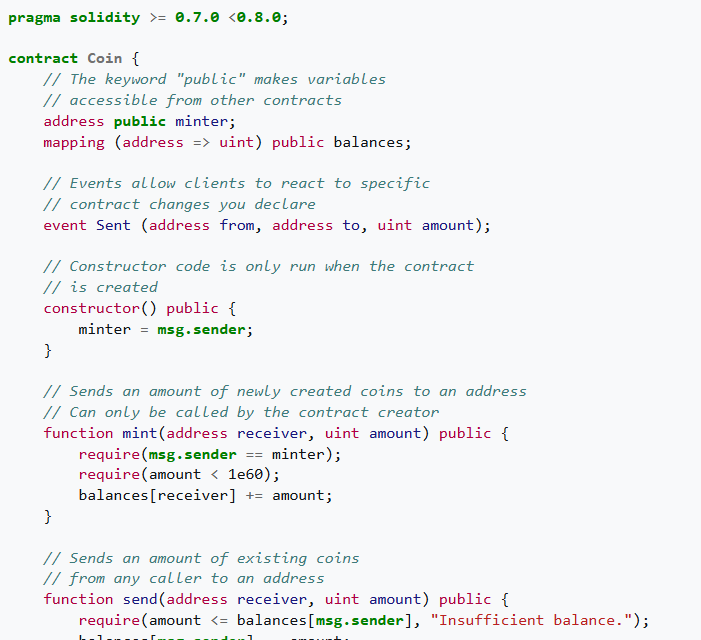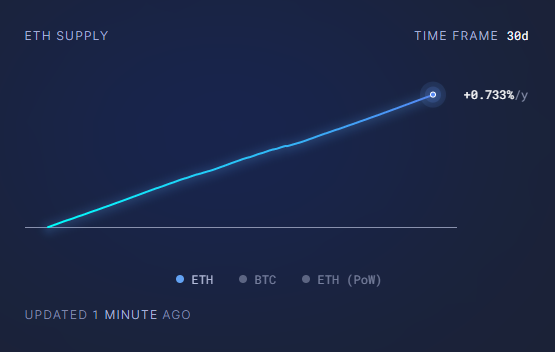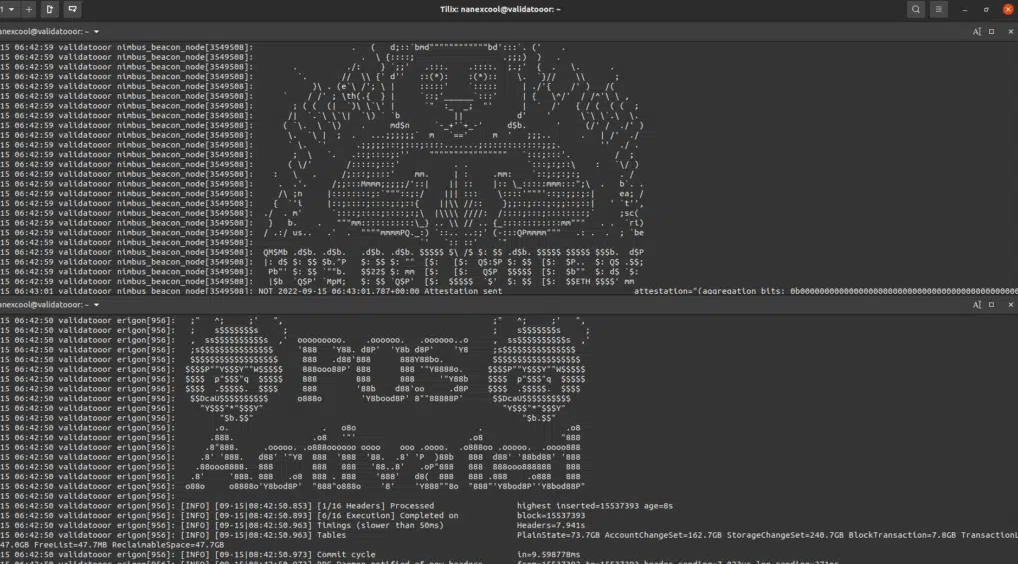Today, July 30, the Ethereum community celebrates its tenth anniversary. A decade since its main network (Mainnet) He launched for the first time, without having stopped Not a single day since then.
At that time, this ecosystem grew and forged its own history through technical milestones, challenges, hackeos until reaching pertra, the greatest update in its history.
As commemoration, the Ethereum Foundation (EF) has lit a symbolic torch: a non -fungible token (NFT) that is traveling from “hand to hand”, through different wallets of characters linked to the ecosystem, until reaching its final destination this July 30, when It will be burned as a closing and celebration gesture.
From cryptootics, on the occasion of the 10th anniversary of this chain, we highlight the ten most relevant events in its history.
1. The birth of a vision
Ethereum’s story began before launching the base layer (L1), when November 28, 2013Vitalik Bterin co -founder together with other collaborators such as Gavin Wood, Joseph Lubin and Anthony Di Iorio, presented an initial draft of the white paper of this protocol, entitled «Ethereum: a next -generation platform for intelligent contracts and decentralized applications».


This document, materialized in 2014, describes Ethereum as a protocol with a programming language Turing-Complete Integrated, capable of coding arbitrary state transition functions. This quality allowed (and allows) developers to create various systemsfrom voting, games, to decentralized markets.
2. Creation of the Ethereum Foundation
In July 2014, Ethereum Foundation was created, a non -profit entity that coordinates the development and promotion of the protocol.
Composed of key developers such as Vitalik Buterin, Justin Drake and Tim Beiko, this organization encourages research, organizes events and supports initiatives within the Ethereum ecosystem.
Although sometimes questioned by the community For the degree of influence and other practices such as Ether’s sales, the role of the EF is to guide technical evolution, acting as a reference point for the ecosystem.
3. A language for the future
August 2014 marked the birth of Solidityan open source programming language to write intelligent contracts in Ethereum.
At the beginning of that block chain, when the idea of intelligent contracts barely took shape, the need for a language that could give them life arose. Thus Solidity was born, a custom designed tool for program on this new decentralized infrastructure.


In such a way, Solidity It allows developers to write logical instructions that would be executed automatically on the network, no need for intermediaries.
Since then, this programming language became the main language of the vast universe of Ethereum. From his code came lAs first decentralized applications (Defi) and DAPPSNFT collections and decentralized protocols.
4. The network comes alive
On July 30, 2015, a new era began. That day, Ethereum left the test phase behind and Officially turns on its main chain.
It was not simply the birth of a network and one more cryptocurrency, but the appearance of a platform designed for something much more ambitious: execute intelligent contracts and DAPPs in a global environment without permits.
Unlike Bitcoin, who was focused on being digital money, Ethereum arrived with The promise of being a world computer.
Thus, a new ecosystem began to take shape, where finance, games, governance and digital art would find a new way of existing: without central control, in the hands of the code.
5. A setback with lessons
June 17, 2016, a exploit shook Ethereum foundations: An attacker took advantage of a vulnerability in the smart contract of The Dao, a platform aimed at financing decentralized projects, and diverted more than 60 million dollars in Ether (ETH).
Given the crisis, Vitalik Buterin proposed a Hard fork (hard bifurcation) to reverse the attack, approved in July under the EIP-779 (Dao Fork).
The network was divided into two paths: Ethereum (Eth) and Ethereum Classic (etc). The decision, controversy for challenging the immutability of the protocolmarked a before and after, with the attacker retaining the funds in the original chain.
6. Scalability on the horizon
In 2017, layer 2 (L2) solutions emerged to relieve Ethereum congestion.
A first approach occurred in December of that year, when the Truebit protocol presented An innovative alternative: Computer verifications Off-Chain They approached him Verifier’s dilemmtoa problem where nodes, encouraged by efficiency, avoid verifying complex calculations so as not to waste time or rewards.
For example, it was sometimes used in Ethereum for users to monitor ICO (initial coins offers) through intelligent Truebit contracts.
That same year, in August, Vitalik Butein and Joseph Poon proposed Plasma, an architecture designed to process transactions outside the main chain, consolidating the role of an L2 as it is currently known.
Its implementation in July 2019 marked a key step towards scalability, and He laid the foundations for the current ROLLUPS. Today there are more than 100 second -layer networks of Ethereum, according to the site L2beatthanks to what was designed in 2017.
7. A step towards sustainability
In August 2021, Ethereum took a turn with the improvement proposal 1559 (EIP-1559), included in the London update: a new mechanism that began to burn part of the rates paid in each transactionaiming to reduce ETH’s offer and adding a deflationary nuance to the protocol.
However, at present, more precisely in the last 30 days, the issuance exceeds burning by 0.7%, marking an inflationary period that pauses that shortage narrative.


8. The transition to a new consensus system
On September 15, 2022 he marked a before and after in the history of Ethereum. That day The Merge was completed, an expected and complex transition that replaced the consensus mechanism Based on work proof (POW) (where miners competed solving mathematical problems to validate blocks) by a participation test model (POS).
Since then, the protagonists of the safety of the network became validators, users who block a certain amount of ETH as a guarantee to have The right to propose and confirm new transactions.


9. Opening to traditional markets
On May 23, 2024, the crypto ecosystem lived another historical milestone: the United States Stock Exchange and Securities Commission (SEC) finally approved the First funds quoted in the Stock Exchange (ETF) based on Ethereum.
Two months later, on July 23, financial giants such as Vaneck and Fidelity launched their products to the market, opening the door for institutional investors to obtain regulated exposure to ETH without the need to interact directly with the network.
10. The last evolution
On May 7, 2025 he marked a new chapter in the evolution of Ethereum with the arrival of the Hard fork Sin, an update that Integrated elevation proposals (Eip).
Among the most outstanding changes were new rules for Staking, key improvements in the performance of second -layer solutions (L2) and the possibility of transforming purses into “Smart Wallets “making way to a more intuitive and automated experience for users.
However, not all innovations were received with applause. In particular, as reported by cryptootics, the EIP-7702 (the proposal that allows portfolios to function as intelligent contracts) He turned on an alarm light in the community.
The concern filed in the possible risks that this functionality could entail, such as the so -called blind firms, which enable malicious applications to manipulate transactions Without full user consent, exposing them to fund drainage attacks.
Thus, while Ethereum continues its path to greater sophistication, it also faces the new challenges that arise from its constant evolution.


